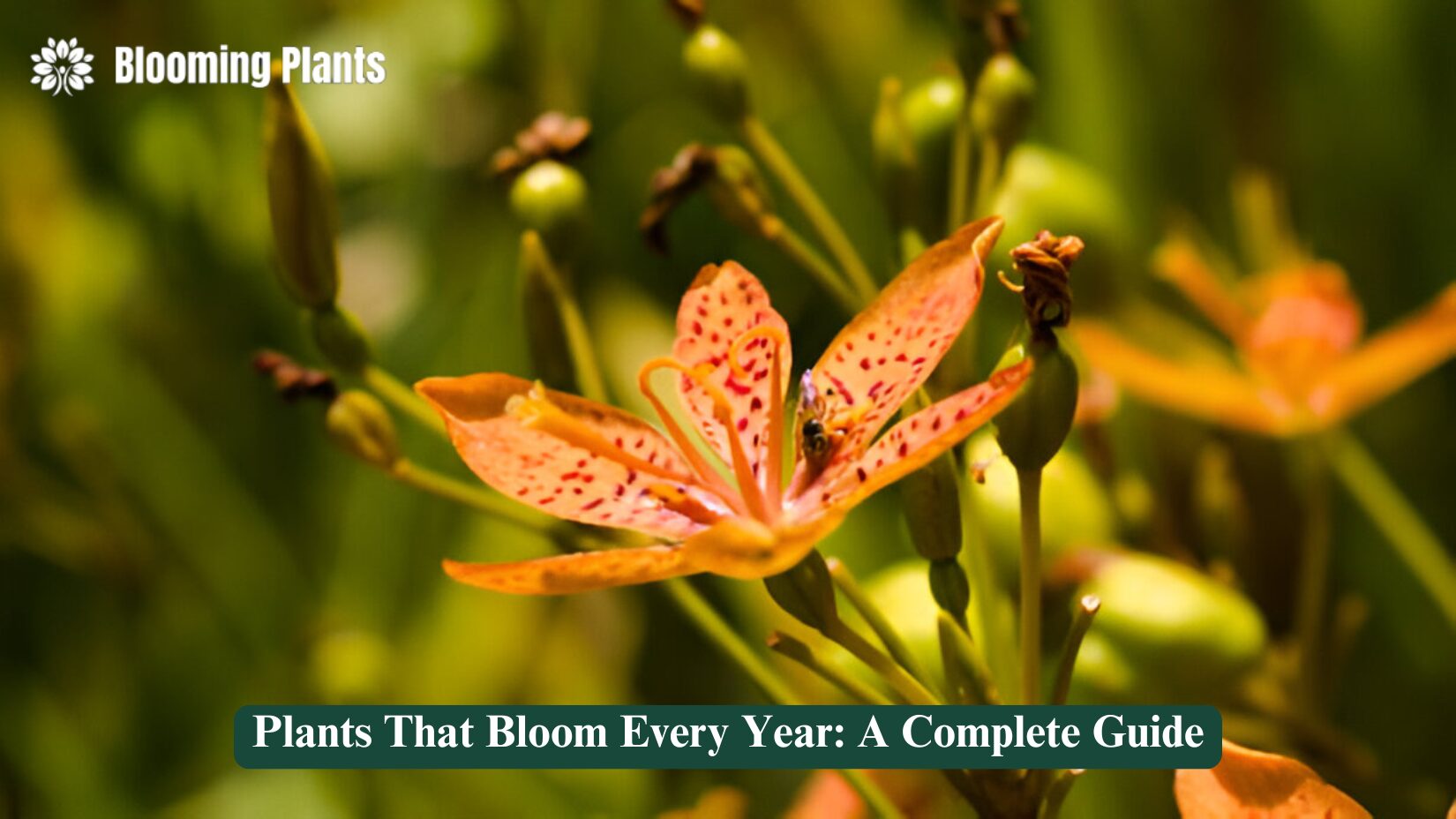Introduction
When planning a beautiful and sustainable garden, choosing plants that bloom every year is a smart move. These plants, known as perennials, return year after year, adding consistent color and beauty to your landscape. Unlike annuals, which complete their life cycle in one season, perennials keep growing and blooming, making them a favourite among gardeners.
In this guide, we’ll explore some of the best perennials, their growing conditions, maintenance tips, and how to incorporate them into different garden styles. Whether you’re a beginner or a seasoned gardener, this article will help you create a thriving garden filled with blooms year after year.
What Are Perennial Plants?
Characteristics of Perennials
- Perennials live for multiple years, regrowing from their root system each season.
- Some may die back to the ground in winter but re-emerge in spring.
- They come in a variety of colours, shapes, and sizes.
Differences Between Annuals, Biennials, and Perennials
- Annuals: Complete their lifecycle in one season and must be replanted each year. Example: Petunias.
- Biennials: Grow one year, bloom the next, then die. Example: Foxglove.
- Perennials: Regrow every year, often requiring less maintenance over time. Example: Peonies.
Why Perennials Are a Gardener’s Best Friend
- Save money since they don’t need yearly replanting.
- Offer a variety of colours and textures throughout the seasons.
- Provide habitat for beneficial insects and pollinators.
Best Perennial Flowers for Beginners
Low-Maintenance Perennials
- Daylilies – Hardy, drought-resistant, and bloom prolifically.
- Black-eyed Susans – Thrive in various conditions and attract pollinators.
- Hostas – Excellent for shade gardens and require minimal care.
Best Perennials for All Climates
- Lavender – Loves full sun and well-drained soil.
- Sedum – A succulent that withstands harsh conditions.
- Echinacea (Coneflower) – Tolerates both drought and cold weather.
Perennials That Thrive in Shade
- Ferns – Add greenery to shady spots.
- Astilbe – Produces feathery blooms in partial shade.
- Bleeding Heart – Offers delicate heart-shaped flowers in spring.
Colorful Perennials That Bloom Every Year
Vibrant Spring Perennials
- Tulips – Although technically bulbs, they return each spring.
- Peonies – Large, fragrant blooms in pink, white, and red.
- Daffodils – Bright yellow flowers that signal the arrival of spring.
Summer-Long Blooming Perennials
- Shasta Daisies – Provide cheerful white blooms all summer.
- Bee Balm – A pollinator magnet with vibrant red and purple flowers.
- Russian Sage – Adds a soft purple haze to gardens.
Fall and Winter Blooming Perennials
- Chrysanthemums – The ultimate fall flower in various colors.
- Asters – Provide late-season nectar for bees.
- Hellebores – Bloom even in winter, brightening up dull landscapes.
Table: Best Perennial Flowers by Growing Conditions
| Flower Name | Sun Requirements | Soil Type | Bloom Time | Special Features |
| Lavender | Full Sun | Sandy | Summer | Fragrant, Drought-Tolerant |
| Coneflower | Full Sun | Loamy | Summer-Fall | Attracts Pollinators |
| Hostas | Partial Shade | Clay | Spring-Summer | Shade-Loving |
| Daylilies | Full Sun | Any | Summer | Low Maintenance |
Conclusion
Perennial plants are a fantastic investment for any garden, providing beauty, fragrance, and environmental benefits year after year. Whether you’re looking for low-maintenance flowers, pollinator-friendly options, or blooms for every season, there’s a perennial to suit your needs. Start planting today and enjoy a garden that keeps getting better with time!
FAQs
What is the difference between annuals and perennials?
Annuals complete their lifecycle in one season, while perennials regrow every year.
How do I make my perennials bloom longer?
Deadhead spent flowers, fertilize appropriately, and choose varieties with extended bloom periods.
What are the easiest perennials to grow?
Daylilies, black-eyed Susans, and hostas are great beginner-friendly options.
Can I grow perennials in pots?
Yes, many perennials like lavender and hostas do well in containers.
Do perennials need fertilizer?
Yes, but they generally require less than annuals. Compost and slow-release fertilizers work well.
How do I prevent pests from damaging my perennials?
Use natural repellents, encourage beneficial insects, and keep plants healthy with proper care.
What perennials bloom the longest?
Coneflowers, coreopsis, and Russian sage offer extended bloom periods.
Can perennials survive winter?
Most can, but some may need mulching or protection in extreme cold.
How often should I water perennials?
It depends on the plant, but most need watering once or twice a week.
Do perennials spread over time?
Many do, such as hostas and daylilies, which gradually expand their clumps.

